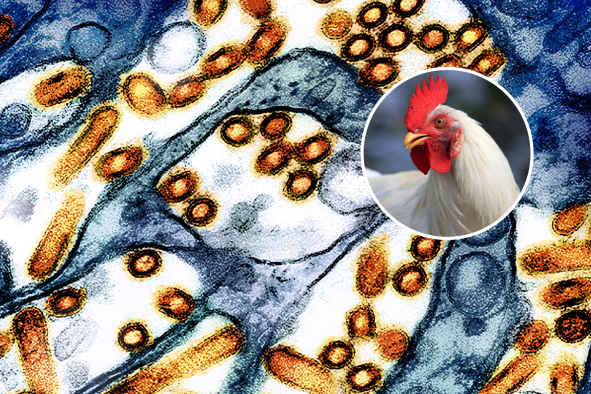A child in Canada has died after contracting rabies from a bat that found its way into the youngster's bedroom.
The child, who lived with family in the Brantford region of Ontario, died after being infected with the virus in the Timiskaming region. The case marks the first domestically acquired instance of human rabies in Ontario since 1967. The child, whose name, age and other information have not been released, was in a hospital last month, according to Canada's CBC news outlet.
"They woke up with a bat in their room," Malcolm Lock, a doctor at the Haldimand-Norfolk Health Unit, said Wednesday at a health board meeting, the CBC reported. "The parents looked, didn't see any signs of a bite or scratches or saliva and didn't seek getting a rabies vaccine."
Rabies is a deadly disease that affects the central nervous system of mammals, including humans. It is caused by the rabies virus, which is typically transmitted through the saliva of an infected animal, most often through bites or scratches. The disease is almost always fatal once symptoms appear.
The time between catching the virus and symptoms beginning to show—known as the incubation period—can range from a few days to several months, depending on the location of the bite and the viral load.
Initially, rabies symptoms may resemble the flu, and they include fever, headache, muscle weakness and general discomfort. As the disease advances, it affects the brain and nervous system. Symptoms include agitation, confusion, hallucinations, hydrophobia (fear of water), excessive salivation, paralysis and, ultimately, coma.
Once the neurological phase begins, rabies is almost always fatal. It can take up to four weeks for death to occur after the onset of symptoms.
Thankfully, rabies vaccines can prevent the virus from taking hold if administered before symptoms appear. In the U.S., around 60,000 people receive post-exposure prophylaxis each year after a potential exposure to the virus, according to the U.S. Centers for Disease Control and Prevention (CDC).
Fewer than 10 deaths per year from rabies occur in the U.S., with many of these cases having resulted from exposure outside of the country. In Canada, only 28 human cases have resulted in death due to rabies since 1924, nine of which were in Ontario.
Rabies is found in animals such as bats, raccoons, skunks, foxes and domestic dogs. Among the animals in the U.S. that cause rabies infections, bats are the most commonly reported species, and bats with rabies are found in all U.S. states except Hawaii.
"Contact with infected bats is the leading cause of human rabies deaths in [the U.S.]; at least 7 out of 10 Americans who die from rabies in the US were infected by bats," the CDC says. "While rabid dogs in the US are uncommon, around the world, domestic dogs are responsible for more than 95 percent of the estimated 70,000 human deaths that occur each year."
In the Haldimand-Norfolk area, which contains Brantford, 16 percent of bats have tested positive for rabies this year, while previous years saw only 10 percent come back positive.
"It's extremely important anyone who has a form of exposure [to bats] seeks medical attention," Lock said.
The CDC advises people to avoid touching bats, especially those showing strange behaviors, such as being active during the day, entering homes or being unable to fly.
"If you're bitten or scratched by a bat, wash the wound with soap and water and get medical help right away. If bat saliva or brain material gets into your eyes, nose, mouth, or an open wound, see a healthcare professional urgently," the CDC says.
It continues: "Bat bites can be tiny, so if you think you have been in contact with a bat, talk to a medical professional. If you find a bat in your home, contact animal control or a health professional to safely capture it for rabies testing. Do not release the bat until you talk with a public health expert."
Do you have a tip on a science story that Newsweek should be covering? Do you have a question about rabies? Let us know via science@newsweek.com.
Disclaimer: The copyright of this article belongs to the original author. Reposting this article is solely for the purpose of information dissemination and does not constitute any investment advice. If there is any infringement, please contact us immediately. We will make corrections or deletions as necessary. Thank you.



